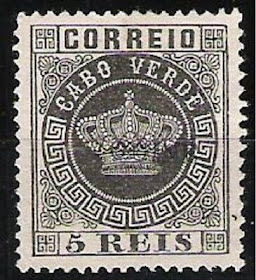In its heyday, Portuguese India consisted of 22 ports
strung around the India’s peninsula like a strand of pearls. Goa, the landing
point for Vasco da Gama’s 1498 cape-rounding adventure, was first and primary among
these.
By the time Portuguese India’s first stamps were in
use (1871), however, only five pearls remained – Goa, the administrative
center, and four exclave communities north of Bombay. Bombay (Bom Bahia
in Portuguese, good bay) had been part of Portuguese India from 1534 to 1661
but it, like the other pearls, was lost to the English. When Catherine of
Braganza married King Charles II of England (1662), Bom Bahia was part
of her dowery.
Yellow dots on Van Gelder’s map (below) mark what
remained under Portuguese control, 1871-1940.
Portuguese colonial stamps are monotonously
repetitive, as I’ve monotonously repeated in this blog. Although mostly
following the same pattern, Portuguese India postage does provide three welcome
exceptions to the normal -- a breath of fresh charm for our album pages.
First exception: Portuguese India philately begins with 55 local stamps (1871-1877) used solely within the colony. British postage was required for international mail. Variations in paper quality, perforations, size of letters and numbers, and color tone make these stamps challenging even for specialists. And they’re usually expensive. In 1882 and 1883, the locals were surcharged with new values. Sadly, Big Blue provides no spaces for these.
Scott #s 260c, 300, 283b, orange, likely a philatelically inspired cover
Third exception: In 1931 Portugal provided its prize
India colony with six unique stamps for the exposition of Saint Francis Xavier.
Left
to right: Scott #415, brown, signature of St. Francis
In the Catholic tradition, an exposition involves a
public display of sacred relics, in this case the mummified body of Xavier in
priestly vestments. Xavier was a close companion of Ignatius Loyola, founder of
the Society of Jesus (Jesuits). They became friends during their college years
in Paris and, impressed with Ignatius’s piety, Xavier joined the Jesuits. He
was ordained in 1537 and sent to India in 1541. After ten years of evangelistic
work in Goa, India, he traveled to Malaya, Macao, Portuguese China, and Japan,
where he continued his missionary work.
The 1931 exposition of Xavier’s remains was requested
by General Joao Carlos Craveiro Lopes, newly appointed as the 122nd
Governor-General of Portuguese India. He sought the saint’s blessing. Such
expositions normally occur about every 10 years.
The event began 3 December 1931, the day the six
stamps were released. A large procession of clergy and the faithful at the
basilica of Bom Jesus (Good Jesus) was met by the new governor at the basilica door. The
Patriarch of Goa handed the saint’s gold, emerald encrusted staff (previously
removed from the coffin) to the Governor.
Final ceremonies were held 19 March 1932.
There is a parallel Portugal series, also issued in 1931,
but it commemorates Saint Anthony of Lisbon, aka, Saint Anthony of Padua. The
stamps in the two issues are the same size and have similar colors. Both saints
are noted for their missionary ardor.
These three exceptions to the normal repetitive
pattern of Portuguese colonial stamps hint at the importance of India’s
“pearls” for the mother country, even though their luster had faded by the time
stamps made their first appearance. India had been the point of departure for
establishing other Portuguese Asian settlements. India had beautiful cloth and
spices to trade; the Portuguese held a crown monopoly on pepper. Portuguese
settlers were encouraged to marry Indian spouses. And Bom Jesus celebrates
an important saint’s remains.
India, using military force, ended all Portuguese
control in 1961. Portuguese creole is now spoken by only a few people. The
heritage of the first European power to colonize a part of India -- and the
last to relinquish control -- slowly fades.
Census: 155 on BB spaces, five tip-ins, 52 on
supplement pages.
(1) Licensed under the Creative Commons Attribution-Share
Alike 2.5 Generic license.
(2) From http://www.stampworldhistory.com/country-profiles-2/asia/portuguese-india/
(3) This post has drawn on information provided by Gokak Stamps. Gokak, India, Karnataka State.













.jpg)
.jpg)


.jpg)
.jpg)


.jpg)



.jpg)


.jpg)
.jpg)








































